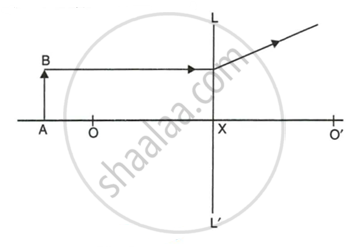Advertisements
Advertisements
Question
A beam of light is incident through the holes on one side of a box and emerges out through the holes on its opposite side as shown in the following figure:
The box contains:
(a) a glass prism
(b) a concave lens
(c) a convex lens
(d) a parallel-sided glass slab
Solution
a concave lens
This is because the emergent rays of light are diverging.
APPEARS IN
RELATED QUESTIONS
If the image formed by a lens for all positions of an object placed in front of it is always erect and diminished, what is the nature of this lens? Draw a ray diagram to justify your answer.
Define the principal focus of a concave lens.
An object is placed 10 cm from a lens of focal length 5 cm. Draw the ray diagrams to show the formation of image if the lens is diverging.
When an object is placed 10 cm in front of lens A, the image is real, inverted, magnified and formed at a great distance. When the same object is placed 10 cm in front of lens B, the image formed is real, inverted and same size as the object.
What is the focal length of lens A?
When an object is placed 10 cm in front of lens A, the image is real, inverted, magnified and formed at a great distance. When the same object is placed 10 cm in front of lens B, the image formed is real, inverted and same size as the object.
What is the nature of lens B?
A person finds difficulty in seeing nearby objects clearly. His vision can be corrected by using spectacles containing:
(a) converging lenses
(b) diverging lenses
(c) prismatic lenses
(d) chromatic lenses
Study the diagram below.

- Name the lens LL’.
- What are the points O and O' called ?
- Complete the diagram to form the image of the object AB.
- State three characteristics of the image.
When an object is kept within the focus of a concave mirror, an enlarged image is formed behind the mirror. This image is :
Do we expect any change in the position, nature, and size of the image
(i) formed by a concave lens,
(ii) with a change in the position of the object?
Define the term principal foci as applied to a concave lens. Illustrate your answer with the aid of proper diagrams. Show the focal length of the lens in the diagram.
